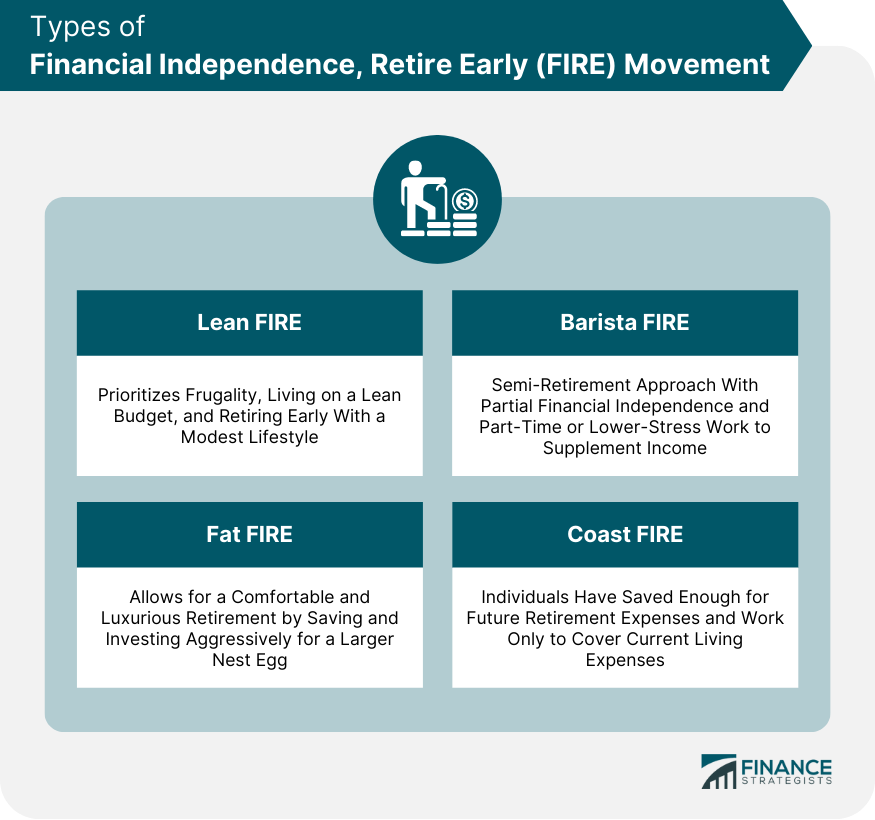
When you imagine your retirement journey, you likely picture trips to the beach, leisurely days with the grandkids and lots of time for hobbies. A lengthy stay in a nursing home probably isn’t part of that vision. Yet, the reality is that nearly 70% of Americans turning 65 will need some form of long-term care and support.
This isn’t just a statistic; it’s a call to action for prudent financial planning. As Beth Ludden, senior vice president of long-term care product development at Genworth, wisely states, “Everyone thinks they’ll be in the 30%, but the numbers say to plan otherwise.” Given the significant costs involved, proactive preparation is not just smart, it’s essential for protecting your savings and ensuring quality care.
Long-term care insurance (LTC insurance) emerges as a vital tool in this planning. It’s designed to help cover the costs associated with extended care needs, protecting your assets and offering greater flexibility in care choices. But like any complex financial product, understanding its nuances is key. This guide is here to empower you with the knowledge needed to navigate the world of LTC insurance and make an informed decision about whether it’s the right fit for your future.

1. **What is Long-Term Care Insurance and What Does It Cover?**Long-term care insurance is designed to help cover the costs of care when someone can no longer perform everyday tasks on their own, such as bathing, dressing, or managing medications. This isn’t about covering short-term illnesses or rehabilitation after a hospital stay, which regular health insurance or Medicare might assist with. Instead, it addresses the continuous support needed for chronic medical conditions, disabilities, or disorders like Alzheimer’s disease.
It’s crucial to understand that long-term care itself refers to “a host of services that aren’t covered by regular health insurance.” Medicare, for example, “covers only short nursing home stays or limited amounts of home health care in specific instances, such as for rehab after a hospital stay,” leaving a significant gap for ongoing custodial care. Without LTC insurance, you’d typically have to pay for this care yourself, often exhausting savings before qualifying for government assistance like Medicaid.
One of the significant advantages of LTC insurance is the flexibility it offers in where and how you receive care. Most policies will reimburse you for care given in a variety of places. This includes your own home, a nursing home, an assisted living facility, an adult day care center, or a skilled nursing facility. This broad coverage means you can choose the setting that best suits your needs and preferences, rather than being limited to options that accept government payments.
However, it’s important to remember that “policies vary widely, so it’s essential to understand what your plan will – and won’t – cover.” Two plans that appear similar on the surface “might differ drastically in the services they cover and the costs they pay.” Therefore, diligent review of policy language and exclusions is always a recommended first step.
Read more about: Unmasking the Truth: 10 Costly Retirement Lies You Need to Stop Believing for a Secure Future

2. **How Long-Term Care Insurance Works: Eligibility and Benefits**Understanding how a long-term care policy works involves grasping the eligibility criteria, the concept of an elimination period, and how benefits are structured. When you buy an LTC insurance policy, you are essentially setting up a safety net that activates under specific conditions related to your health and ability to perform daily tasks. This ensures that the coverage is there precisely when you need it most, aligning with the core purpose of long-term care.
Generally, you are eligible for benefits once you can no longer perform a set number of the so-called activities of daily living (ADLs) or become cognitively impaired. The standard measure for this eligibility is the inability to perform “at least two out of six ‘activities of daily living,’ called ADLs, on your own.” These fundamental ADLs include “Bathing, Caring for incontinence, Dressing, Eating, Toileting (getting on or off the toilet), and Transferring (getting in or out of a bed or a chair).” The insurer will review medical documents and may conduct an evaluation to confirm eligibility and approve your plan of care.
Another critical component of how these policies function is the “elimination period,” often referred to as a waiting period. This is the amount of time you must pay for long-term care services out of pocket before your insurance benefits kick in. Benefits most commonly start after 90 days, meaning you would cover the initial three months of care expenses yourself. You might have the option to pay higher or lower premiums to adjust this waiting period, allowing you to tailor the policy to your financial comfort level.
Once coverage begins, benefits are typically capped at a certain amount, either daily or monthly, and usually up to a lifetime maximum or a specific number of years. For instance, a policy might offer “up to $6,000 per month for a nursing home or a home healthcare worker.” While insurers once offered unlimited benefits, today, “they usually limit payments to three to five years.” You also choose a maximum possible payout from the policy, for example, a total of $165,000 for care. Different amounts may be allowed for care in your home versus a nursing home or other facilities, adding another layer of customization to your coverage.

3. **The Bumpy History of Long-Term Care Insurance: Understanding Past Challenges**To fully appreciate the current state of long-term care insurance, it’s helpful to look back at its origins and evolution. The journey of LTC insurance has been anything but smooth, marked by significant learning curves for insurers and, unfortunately, some difficult experiences for policyholders. This historical context provides valuable insight into why policies are structured as they are today and what you can expect.
In its infancy, the product was quite different from what we see now. “The earliest LTC insurance policies, sold in the 1980s, covered only nursing home care,” reflecting a narrower understanding of long-term care needs. However, as the demand for diverse care options grew, insurers adapted. “Through the 1990s and early 2000s, insurers started covering home care services, assisted living, adult day care and other options,” expanding the utility and appeal of these policies.
Despite these advancements, the industry encountered significant financial hurdles. Many early policies “promised lifetime benefits,” a generous offering that proved unsustainable. Insurers, relatively new to this market, “underestimated how much they would pay in claims and overestimated how much they would earn in investments.” This miscalculation led to widespread financial trouble for these companies and, with regulatory approval, “substantially raised premiums on existing customers.” This period of instability understandably shook public confidence and led to many companies exiting the market.
Consequently, “many companies stopped selling traditional long-term care insurance,” leaving only a few players today offering “more limited coverage periods at higher prices.” The impact on policyholders was considerable, with “70 percent to 80 percent of people with traditional policies have seen premium increases,” according to Jesse Slome of the AALTCI. This bumpy history means that anyone considering LTC insurance needs to understand the past to assess the present market with clarity.
However, it’s important not to dwell solely on the past. The industry has learned from these experiences. “Companies selling newer policies have retooled them to avoid repeating that history.” Slome affirms that “The new policies sold today have factored in the things that caused issues with older policies. While no one can guarantee you won’t face a substantial rate increase due to a market adjustment, it’s very unlikely.” This indicates a more stable and thoughtfully designed product available in the market today.

4. **Navigating Premium Increases: Options for Existing Policyholders**For those who already own a traditional long-term care insurance policy, the prospect of premium increases can be a significant concern. Many clients with decades-old policies continue to see rate adjustments. However, it’s important to understand that if you face a premium increase, you do have options to consider before making any hasty decisions. Being aware of these choices can help you maintain some control over your financial planning.
One possibility, often attractive for individuals who can comfortably afford the additional cost and possess older, more generous policies, is simply to “pay the increase and keep the benefits you signed up for.” As Jodi Cirignano, a managing director at Peapack Private Wealth Management, notes, this choice often makes sense for those with policies that offer robust coverage that would be difficult or impossible to replicate today. It preserves the original intent of your planning.
Alternatively, if absorbing the higher premium isn’t feasible or desirable, you can “accept reduced benefits at your old premium rate.” This means you would modify your policy to receive fewer benefits or less inflation protection, thereby keeping your current premium cost. Many policyholders choose this route to keep their insurance intact while managing their budget effectively, according to Graham, an adviser whose clients often opt for this adjustment.
What experts strongly caution against is dropping a policy outright, especially if you’re older and your health has declined. Seeking out new coverage under such circumstances “will almost certainly cost you more,” and in some cases, you may not qualify at all. It’s reassuring to know that “as long as you keep paying, insurers can’t legally drop you,” providing a level of security once you’ve secured coverage. Therefore, careful consideration of these options, ideally with a financial advisor, is paramount.

5. **Crucial Considerations Before Buying: Budget, Assets, and Financial Goals**Deciding whether to purchase long-term care insurance is a significant financial decision, unlike many other insurance products. As Jesse Slome, executive director of the AALTCI, points out, “‘this is a policy you buy only once.'” This unique aspect underscores the importance of a comprehensive evaluation of your personal financial situation and future aspirations before committing to a policy. It’s not a one-size-fits-all solution, and what works for one person may not be suitable for another.
Your budget is arguably the first and most critical consideration. If you are already struggling to cover essential needs such as food, medicine, or utilities, adding an LTC insurance premium is simply “not a good choice,” according to the National Association of Insurance Commissioners. A practical benchmark suggests that “Premiums shouldn’t take more than 7 percent of your income.” This rule of thumb helps ensure that the insurance premium doesn’t become another financial burden, compromising your current quality of life.
Beyond your immediate cash flow, your asset base plays a significant role in this decision. If your primary motivation for buying LTC insurance is to “protect your assets for heirs or yourself,” it’s generally “most likely to pay off if you have at least $75,000, not counting your primary home.” Conversely, if your assets are less than $30,000, the insurance commissioners warn that “you may pay more than that in premiums,” suggesting it might not be the most efficient strategy for asset protection in that scenario.
Some individuals with substantial assets and careful planning might choose to self-fund their long-term care needs. They might “plan to sell a second home, downsize from a family residence or get a reverse mortgage to cover such expenses,” or even “set up a longevity fund to cover not only long-term care but also all the costs that come from living longer than average.” The primary advantage of self-funding is “total flexibility in how you spend your care dollars,” offering complete control over your care choices without policy limitations.
Finally, your ultimate financial goals, particularly regarding legacy and inheritance, should factor into your decision. As Cirignano observes, “‘Some people feel very strongly about leaving something for their families’ and are highly motivated to buy insurance to protect their assets from a catastrophic yearslong need for care.” On the other hand, “‘Others are happy to bounce their very last check.'” Your personal philosophy on leaving money behind versus using it for your own care will heavily influence whether LTC insurance aligns with your broader financial plan.

6. **The Impact of Age and Health: When to Consider Purchasing**The timing of your long-term care insurance purchase is a critical factor that directly influences both the cost and your ability to qualify for a policy. It’s not a product you can simply buy on demand once care is imminent; rather, it requires foresight and proactive planning, often years in advance of potential need. Understanding the interplay of age and health is key to making a strategic decision.
One undeniable truth in the world of LTC insurance is that “the older you are when you buy long-term care insurance, the more it will cost.” Premiums generally increase with age, making an earlier purchase a potential money-saver over the long term. While policies are available for older adults, most experts now recommend exploring options “in your 50s or early 60s,” with some even suggesting “starting in your 50s or even your late 40s” to lock in more favorable rates. The majority of people who successfully purchase long-term care insurance do so in their “mid-50s to mid-60s.”
Your current health status is equally, if not more, important than your age. “Health problems also will make it more expensive or, in some cases, impossible to get coverage.” Insurers conduct a rigorous health underwriting process because they need to assess the risk of paying out benefits. “Turndown rates rise steeply with age” and health conditions. For example, if you “already have memory loss or trouble with daily self-care, you are unlikely to qualify” for a policy. Similarly, carriers “won’t approve most applicants older than 75” or those with debilitating conditions.
The underwriting process itself can vary. “Some insurers require a physical exam or medical-record review,” delving deep into your health history. “Others conduct only health interviews via telephone,” which may seem less intrusive but are still comprehensive. It’s worth noting that “traditional policies have more stringent health requirements than hybrid ones,” suggesting that hybrid options might be slightly more accessible for those with minor health concerns. Regardless, the consensus is clear: you must “apply while still reasonably healthy.”
Jesse Slome emphasizes this point, stating, “‘You can’t wait until you’re in a facility and need help paying bills to apply. By then, it’s way too late.'” He suggests that “People aged 55 to 69 in reasonably good health are generally the best fit for LTC insurance,” with 80 being the maximum age to apply at most companies. Once you do qualify, the coverage is usually “guaranteed renewable for your entire life as long as you keep paying the premiums.” This means your policy cannot be canceled due to changes in your health after it’s issued, making early qualification a lasting advantage. However, if you let the policy lapse and decide to reapply later, you would again need to pass health underwriting, underscoring the importance of continuous premium payments.
Read more about: Decoding Your Wealth: What the Average 60-Something American Has in Net Worth and How You Compare

7. **Understanding the Cost of Long-Term Care Insurance**Long-term care insurance is a significant investment, and its cost is a primary concern for many potential policyholders. The premiums you pay for an LTC policy are not uniform; they depend heavily on a variety of personal factors, making it crucial to understand what influences your specific rate. Being informed about these cost drivers allows for more accurate budgeting and expectation setting before you commit to a plan.
Several key factors directly impact how much you’ll pay for your long-term care insurance. Your age and gender are two of the most significant determinants; generally, the older you are when you purchase a policy, the higher the premiums will be. Women typically pay more than men for the same coverage because, on average, they live longer and are more likely to need extended long-term care services. Marital status also plays a role, with married individuals often qualifying for lower premiums than single applicants.
To illustrate, a 55-year-old male in standard health might pay around $2,075 per year for a $165,000 LTC policy with a 3% inflation rider, which would grow to about $400,500 by age 85. For a 55-year-old female, the same policy could cost $3,700 annually. Similarly, at age 65, a male might pay $3,280 per year, while a female would face annual premiums of $5,290 for comparable coverage. These figures underscore the considerable difference based on age and gender.
While LTC insurance policies use level premiums, meaning your cost won’t increase based on your individual age or health after you sign up, insurers can still raise rates across all policyholders. These increases, however, must be justified to the government to support future payouts, not for extra profits, making substantial rate adjustments less likely with newer policies. Furthermore, the overall benefit level, including inflation protection riders, also drives costs, as a policy paying $200 a day for five years with compounded 3 percent annual growth will naturally cost more than one with lower benefits or no inflation protection. Understanding these dynamics is essential given the nationwide average daily cost for a shared room in a long-term care facility is $305, with an average annual cost of $111,325, per the most recent data from Genworth’s Cost of Care Calculator 2024.
Read more about: Mastering Your Premiums: 12 Proven Ways to Slash Car Insurance Costs, Including Top Models and State-Specific Strategies for 2025

8. **Ways to Pay for Your Policy and Tax Advantages**Beyond simply budgeting for monthly or annual premiums, there are several strategic ways to fund your long-term care insurance policy, some of which offer significant tax advantages. Exploring these payment methods can make an LTC policy more accessible and financially efficient, especially for those looking to optimize their overall financial plan.
One potential avenue for covering premiums is through a Health Savings Account (HSA). For consumers enrolled in certain high-deductible health plans, you may be able to cover premiums tax-free using funds from your HSA. This method effectively reduces your out-of-pocket cost by leveraging pre-tax dollars, making your long-term care planning more economical. It’s a smart way to utilize a savings vehicle already designed for healthcare expenses.
Another innovative option involves exchanging an existing life insurance policy or annuity for a long-term care policy. This process, while complex, can be a highly advantageous deal for many individuals whose insurance goals have evolved over time. It allows you to repurpose an asset that might no longer align with your current financial priorities into coverage for future long-term care needs, often without triggering immediate tax implications on the exchange.
Moreover, long-term care insurance can offer considerable tax advantages, particularly as you age, if you itemize deductions. Both federal and some state tax codes permit a portion or even all of long-term care insurance premiums to be counted as medical expenses. These expenses are tax-deductible once they surpass a certain threshold of your Adjusted Gross Income. The maximum deductible premium limits increase with your age, offering greater tax relief to older policyholders.
It is vital to confirm that any policy you consider is a “tax-qualified” long-term care insurance policy, as only these meet the federal standards required for these deductions. The potential for tax deductions, especially as healthcare costs continue to rise, adds another compelling layer of financial benefit to owning an LTC policy, making it a valuable component of a comprehensive financial and tax strategy.
Read more about: A Financial Advisor’s Blueprint: 15 Essential Investment Strategies for a Secure Retirement in 2025

9. **Exploring Alternative ‘Hybrid’ Products**For individuals seeking long-term care coverage but with reservations about traditional “use-it-or-lose-it” policies, the market offers compelling alternative products known as hybrid policies. These innovative solutions combine long-term care benefits with other financial products, most commonly life insurance or annuities, offering a versatile approach to planning for future care needs.
Hybrid policies, also referred to as asset-based or linked-benefit LTC policies, typically integrate long-term care coverage into a life insurance product. If you require care, the policy pays out some or all of the death benefit while you are still alive to cover your long-term care expenses. If you pass away without needing care, or exhaust only a portion of the long-term care benefits, your heirs will receive the remaining death benefit. This structure ensures “there’s a payout either way,” as Jordan Mangaliman of Goldline Insurance and Financial Services explains, removing the concern that premiums might be paid without any return.
Another form of hybrid product involves annuities. With this option, you make an upfront payment for an annuity, which then provides guaranteed future income payments, often for life. Some annuities are specifically designed to include a long-term care benefit, which might, for instance, double your monthly payment for several years if you require long-term care. While adding this benefit could potentially reduce your starting monthly annuity payments, it provides a robust safety net for care expenses, leveraging your initial investment in a flexible manner.
While hybrid policies offer the advantage of a guaranteed payout, whether for care or as a death benefit, they typically provide a lower total benefit for care compared to similarly priced stand-alone LTC insurance policies. It is crucial to read the fine print to understand exactly when and how the life insurance or annuity component would pay out for care. These products are often suited for higher net worth individuals who can afford significant lump-sum premiums, although life insurance policies can sometimes be qualified for into your seventies if you are in good health.
Additionally, short-term care policies present another alternative, providing coverage for a duration typically up to one year. These policies are generally more affordable and can be an accessible option for those who may not qualify for traditional or hybrid policies due to health conditions. A notable feature of short-term care policies is that they charge both genders the same prices, making them a potentially better deal for women who typically face higher premiums in traditional LTC plans.
Read more about: The True Cost of ‘Peace of Mind’: 13 Critical Reasons Why Extended Warranties for Your Appliances Are Rarely Worth It

10. **The Importance of Comparing Insurers Before Buying**Given the complexity and long-term commitment associated with long-term care insurance, taking the time to compare offers from various insurers is an absolutely crucial step. Just as you wouldn’t buy a car without checking several dealerships, assuming all policies are identical or priced the same could lead to significant financial disadvantages down the line. Each insurance company operates with its own specific rates and health underwriting standards, meaning the “right” policy can vary greatly depending on your individual circumstances.
To streamline this comparison process, it is highly recommended to engage with an insurance broker who represents multiple insurance companies. Such a professional can provide you with several quotes tailored to your needs, helping you evaluate different options efficiently. When assessing these quotes, it’s wise to look beyond just the price. Consider each insurance company’s A.M. Best rating, which indicates its financial stability and ability to pay future claims, and its J.D. Power score for customer satisfaction, offering insight into their service quality.
It’s worth noting that the long-term care insurance market, particularly for stand-alone policies, is relatively small, with only a handful of insurers currently selling them. These include Mutual of Omaha, Thrivent, National Guardian Life, New York Life, Northwestern, and Bankers Life. This limited number of providers means that while you might expect significant differentiation, Jesse Slome of the AALTCI aptly points out, “‘It’s not like one company will sell you a Mercedes while another is a Honda. With LTC insurance, they’re all Hondas.'” This highlights that in terms of quality and comprehensive coverage, insurers tend to offer similar levels, making price the primary differentiator you’ll be comparing.
Ultimately, by diligently comparing different companies, you empower yourself to find the most suitable policy that aligns with your financial capacity and long-term care needs. This due diligence ensures you secure the best possible value and protection, preventing you from overpaying or settling for a policy that doesn’t adequately meet your expectations, especially since state regulations can cause options and pricing to vary greatly depending on where you live.
Read more about: Unveiling the True Cost: A 7-Year Step-by-Step Guide to Calculating Ownership Expenses

11. **How LTC Insurance Enhances Your Care Choices**One of the most compelling reasons to consider long-term care insurance is the expanded array of care choices it provides. Without LTC insurance, your options for receiving care might be severely limited, often dictated by financial constraints or reliance on government programs like Medicaid, which can restrict your choices to specific facilities or types of care. An LTC policy empowers you to maintain control over your care decisions, ensuring you receive treatment in a setting that best suits your preferences and needs.
Having an LTC insurance policy grants you greater flexibility in determining where and how you receive treatment. Most policies are designed to reimburse you for care provided in a diverse range of environments. This includes receiving care in the comfort of your own home from a home healthcare worker, residing in an assisted living facility, attending an adult day care center, or staying in a nursing home or skilled nursing facility. This breadth of coverage means you are not forced into a less desirable option simply because it’s the only one that accepts government payments.
Moreover, if you have long-term care insurance, you possess the financial leverage to choose a higher-quality facility or specific services that may not be covered by Medicaid or other limited programs. As Beth Ludden of Genworth explains, your policy could pay for a “better facility that doesn’t accept Medicaid.” This ability to select superior care options ensures a greater degree of comfort, dignity, and personalized attention during a vulnerable time in life, directly impacting your overall quality of life.
Jesse Slome of the AALTCI observes that individuals with insurance are often more proactive in seeking and paying for necessary care earlier, rather than delaying it due to cost concerns. He draws an analogy: “‘If an earthquake destroys my house, I won’t cheap out on the repairs because I have homeowner’s insurance. People do the same when they have long-term care insurance.'” This proactive approach, facilitated by insurance, can lead to better outcomes and prevent conditions from worsening, underscoring the profound impact LTC insurance has on maintaining autonomy and well-being.

12. **Understanding State Partnership Programs**To further encourage individuals to plan proactively for long-term care, many states have established “partnership” programs with long-term care insurance companies. These initiatives are designed to make long-term care planning more attractive by offering a unique benefit that links private LTC insurance with state Medicaid programs. Understanding these partnership plans is crucial, as they can significantly enhance your asset protection.
Here’s how these programs generally work: participating insurers agree to offer long-term care policies that meet specific quality standards set by the state. These standards often include important features like providing cost-of-living adjustments for benefits, ensuring your coverage keeps pace with inflation. In return for purchasing one of these “partnership policies,” you gain a substantial advantage should you eventually need to apply for Medicaid after exhausting your LTC insurance benefits.
The primary benefit of a partnership policy is enhanced asset protection. Normally, to qualify for Medicaid, individuals in most states must spend down nearly all their assets to a very low threshold, often around $2,000 for a single person. With a partnership policy, however, you can protect more of your assets. For every dollar your long-term care insurance policy pays out for your care, that same amount of your personal assets becomes protected, or disregarded, when Medicaid determines your eligibility. This means you can qualify for Medicaid sooner and retain more of your savings and property.
For example, if you buy $250,000 of LTC insurance coverage and exhaust the entire policy, your state’s Medicaid program might allow you to qualify for benefits while keeping an additional $250,000 in assets that would normally need to be spent down. This protective shield for your assets provides considerable peace of mind, ensuring that your lifelong savings are not entirely depleted to pay for care. It’s a strategic way to bridge the gap between private insurance and public assistance, offering a safety net for both you and your loved ones.
To determine if your state participates in a long-term care partnership program and to understand the specific rules and benefits available, it’s advisable to check with your state’s insurance department. Some states, like Washington, have even implemented innovative long-term care benefits funded by payroll taxes, further diversifying the landscape of long-term care planning. Exploring these state-specific programs can unlock additional protections and make your long-term care insurance even more impactful.
Read more about: Mastering Your Premiums: 12 Proven Ways to Slash Car Insurance Costs, Including Top Models and State-Specific Strategies for 2025
Navigating the world of long-term care insurance might seem daunting at first, but with a clear understanding of its costs, the diverse product options available, and the strategic advantages it offers, you can make an empowered decision about your future. Whether it’s protecting your hard-earned assets, preserving your preferred care choices, or leveraging tax benefits and state programs, LTC insurance stands as a powerful tool in a comprehensive financial plan. It’s about securing peace of mind, not just for you, but for your loved ones, ensuring that your retirement journey can indeed be filled with those cherished trips to the beach and leisurely days, rather than unforeseen financial burdens.”}



